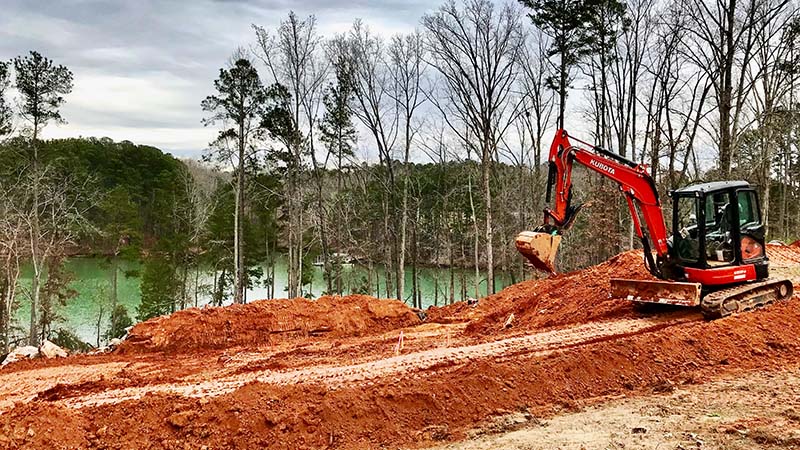Underbrushing: Preparing Your Property for Development or Recreational Use

Maintaining a property often requires clearing out overgrown vegetation that can make the land difficult to access or utilize. Underbrushing is an efficient and sustainable solution, removing unwanted undergrowth while preserving mature trees and the natural beauty of the area. Whether you’re planning a new development project or enhancing a recreational space, underbrushing offers the perfect balance between clearing land and maintaining its ecological integrity. This article delves into how underbrushing prepares your property for diverse uses and why it’s a valuable tool for land management.
What is Underbrushing?
Underbrushing focuses on the targeted removal of smaller vegetation, including shrubs, vines, and overgrowth, while leaving behind healthy trees and desirable plants. Unlike full-scale land clearing, which removes nearly everything, underbrushing ensures that the property retains its essential characteristics while improving its functionality and appearance.
Typically, underbrushing involves the use of specialized equipment designed to handle dense undergrowth effectively. This equipment removes the unwanted vegetation and creates a clean, navigable space suitable for a variety of uses, from development to outdoor recreation.
The Benefits of Underbrushing
Underbrushing provides numerous advantages for property owners looking to enhance the value, usability, and safety of their land. Here are some key benefits:
1. Improved Accessibility
Overgrown vegetation can make it difficult to navigate a property, especially for areas that are meant to be developed or used for recreational purposes. Underbrushing opens up the land, creating clear paths and removing obstacles that hinder access.
2. Enhanced Aesthetics
An overgrown property often looks neglected and unappealing. Underbrushing clears away unsightly undergrowth, allowing the natural beauty of mature trees and other desirable features to shine. This improvement in appearance can also boost property value, making it more attractive to potential buyers or developers.
3. Fire Hazard Reduction
Dense underbrush is a significant fire risk, especially in dry climates or during fire season. Removing this excess vegetation creates defensible space around structures and reduces the likelihood of fires spreading across the property.
4. Promoting Healthy Vegetation
Overgrowth often competes with larger trees and native plants for nutrients, sunlight, and water. By removing underbrush, underbrushing supports the health of desirable vegetation, encouraging stronger growth and better overall ecological balance.
5. Preparing for Development
For properties intended for construction or development, underbrushing is a crucial first step. It creates a manageable space for further clearing, grading, or building, ensuring that the land is ready for the next stages of transformation.
Applications of Underbrushing
Underbrushing is highly versatile, making it suitable for a wide range of property types and purposes. Here are some common applications:
1. Residential Properties
Underbrushing enhances the usability and safety of residential properties. Whether you’re preparing land for a new home or improving outdoor spaces like yards and gardens, this technique creates a well-maintained environment.
2. Recreational Areas
For parks, trails, and other recreational spaces, underbrushing is an ideal solution for creating pathways and clearing out obstructive vegetation. This makes the land more accessible and enjoyable for activities like hiking, biking, or camping.
3. Agricultural Land
Underbrushing helps reclaim overgrown pastures or prepare fields for planting. It ensures that the land is free of invasive species and ready for productive agricultural use.
4. Commercial and Industrial Sites
For properties designated for commercial or industrial development, underbrushing clears the way for surveying, construction, and infrastructure installation.
The Process of Underbrushing
The underbrushing process typically involves several steps to ensure that the property is cleared effectively while preserving its natural integrity:
- Property Assessment: A thorough evaluation of the land is conducted to identify areas with dense undergrowth and determine which vegetation should be removed or retained.
- Equipment Selection: Specialized machinery, such as brush cutters and mulchers, is chosen based on the type and density of the vegetation.
- Targeted Clearing: The undergrowth is removed while larger trees and valuable plants are left intact.
- Debris Management: The cleared vegetation is processed into mulch, which can be left on-site to enrich the soil and prevent erosion.
- Final Touches: The property is inspected to ensure that the desired level of clearing has been achieved and that the land is ready for its intended use.
Environmental Considerations
Underbrushing is a sustainable alternative to traditional land clearing, offering significant environmental benefits. By focusing on selective clearing, this method:
- Minimizes Soil Disturbance: Underbrushing avoids uprooting trees and plants unnecessarily, preserving the soil’s structure and preventing erosion.
- Encourages Native Growth: Removing invasive species allows native plants to thrive, supporting biodiversity and improving the overall health of the ecosystem.
- Reduces Waste: The mulch produced during underbrushing can be repurposed to nourish the soil, eliminating the need for waste disposal.
Why Choose Professional Underbrushing Services?
While some property owners may consider handling underbrushing on their own, the expertise of professionals like God’s Country Land Services ensures that the job is done efficiently and responsibly. Here’s why partnering with experts makes a difference:
- Access to Advanced Equipment: Professionals use specialized tools that are more effective than standard DIY equipment.
- Experience and Knowledge: Experts understand how to balance clearing with preservation, ensuring that the property’s natural beauty is maintained.
- Time and Cost Savings: Hiring professionals reduces the time and effort required to clear large or complex properties.
- Regulatory Compliance: Professionals are familiar with local regulations and can ensure that the clearing process adheres to legal requirements.
Preparing for Underbrushing
Before beginning an underbrushing project, it’s essential to plan thoroughly. Here are some tips to help you get started:
- Define Your Goals: Determine the purpose of the clearing, whether it’s for development, recreation, or safety improvements.
- Set a Budget: Work with a professional service provider to establish a realistic budget for the project.
- Obtain Permits: Check local regulations to see if permits are required for clearing activities.
- Communicate with Experts: Share your vision for the property with the professionals handling the underbrushing to ensure that your goals are met.
Conclusion
Underbrushing is an invaluable tool for property owners looking to prepare their land for development or recreational use. By removing undergrowth while preserving the area’s natural features, this technique enhances accessibility, safety, and aesthetics. With the expertise of god’s country land services, llc, your property can be transformed into a functional and visually appealing space that meets your specific needs.
Whether you’re planning a new construction project, creating recreational trails, or reclaiming agricultural land, underbrushing provides an effective and environmentally conscious solution. Take the first step toward unlocking your property’s potential and experience the benefits of this targeted land management technique.
Read More From Techbullion





